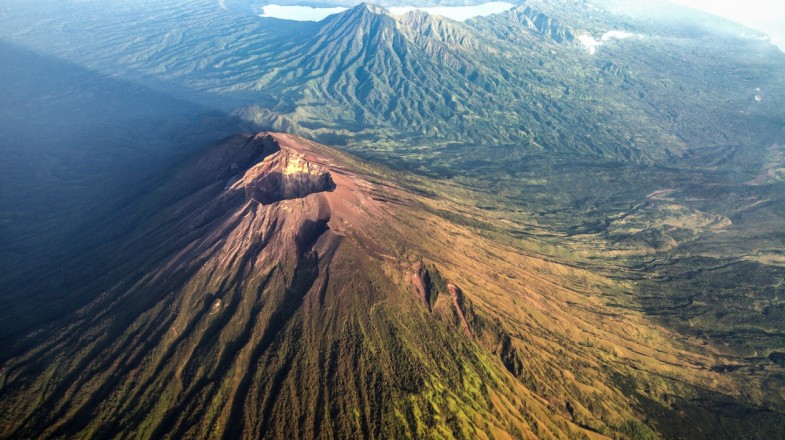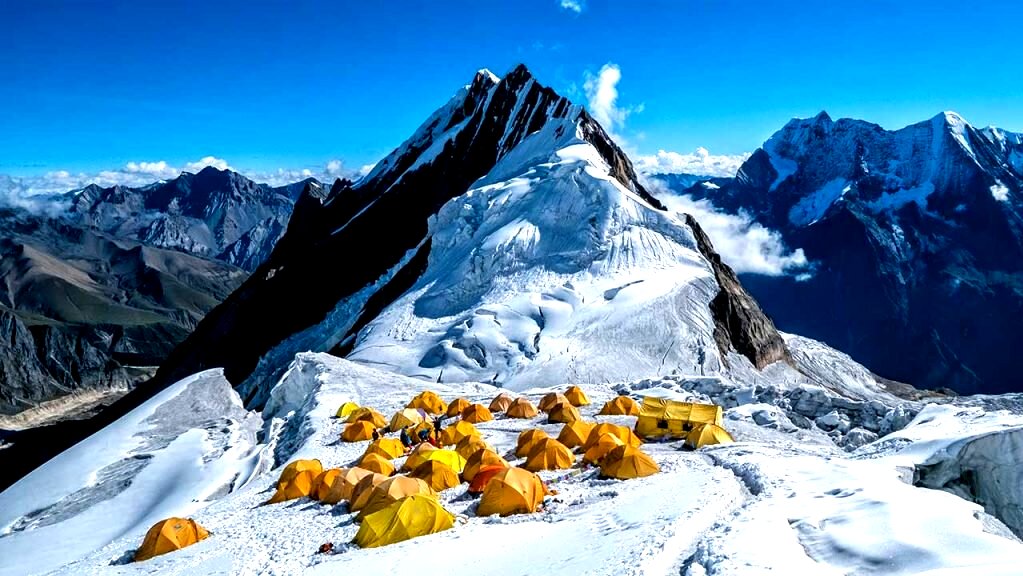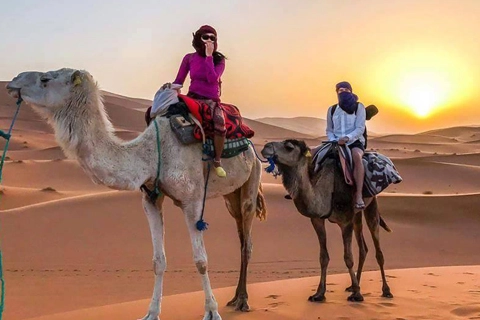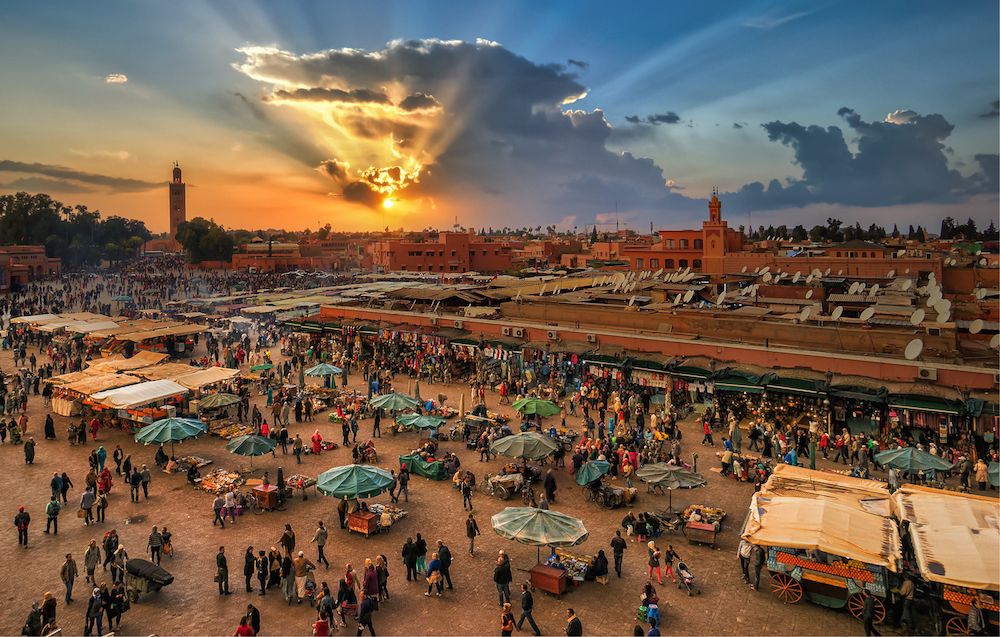Travel
Ride-Sharing Safety: Essential Tips and Legal Insights for Passengers

Ride-sharing services have revolutionized transportation, offering convenience and affordability to passengers across the globe. However, amidst the convenience, safety concerns loom large. Whether commuting to work, heading out for a night on the town, or catching a ride to the airport, ensuring your safety as a ride-sharing passenger should be a top priority. In Ocala, Florida, where ride-sharing is a popular mode of transportation, understanding safety protocols and legal rights is essential.
Understanding Legal Rights and Protections for Ride-Sharing Passengers
Ride-sharing may have blurred the lines of conventional transportation services, but passengers’ legal rights remain clear. In the event of an accident, passengers are typically covered by the rideshare company’s commercial insurance. However, the exact coverage can vary based on whether a ride is in progress or if the driver is available on the application. Similarly, the question of liability can become complex, necessitating professional legal insight. It’s here where the advice of a knowledgeable Ocala rideshare accident lawyer becomes invaluable, guiding accident victims through the maze of legal pathways.
Safety Before The Ride: Pre-Trip Strategies for Passengers
The pre-ride period is the moment to set the stage for a secure trip. Most rideshare apps provide a snapshot of who your driver will be. Scrutinizing the provided information, like the driver’s rating and reviews from previous passengers, can offer initial peace of mind. Before entering the ride, it’s essential to match the vehicle details provided by the app with the actual vehicle arriving. Does the car’s model, color, and license plate line up? Before hopping into the back seat, it’s also a good practice to ask the driver who they pick up to ensure the ride is meant for you. These simple steps form the foundation of a security-conscious routine for savvy ride-sharing users.
During Your Journey: Best Practices for Ride-Sharing Passengers
As the journey unfolds, the safety baton passes primarily to you, the passenger. One essential safety tip is to share the ride details with someone you trust. Most ride-sharing apps have made it seamless to do so with in-app functionalities. Communication remains vital throughout your journey—staying in touch with a friend or family member ensures someone knows your whereabouts. Sitting at the back creates two possible exits and space, which could be crucial in an emergency. Observing the route taken is another smart habit—if the driver strays from the predetermined path without a good reason, take note and don’t hesitate to question their choice.
The Role of Technology in Ensuring Ride-Sharing Safety
Today’s technology is an invaluable ally in ride-sharing safety. The integrated features in ride-sharing apps aspire to do more than facilitate a transaction; they aim to protect. For example, emergency buttons that connect you to 911 and GPS tracking for family and friends are drawn to reassure passengers of their well-being. Looking ahead, technological innovations continue to evolve, including artificial intelligence that can detect unusual stops or deviations from the route and alert the necessary entities.
Steps to Take Following a Ride-Sharing Incident
A calm and collected approach is crucial following a rideshare incident. The primary step is to report the issue via the app, keeping a detailed record of the correspondence. If there’s any injury, immediate medical attention should be sought—not only for health reasons but also to document potential repercussions of the incident. Also, capturing evidence is critical, just as in any vehicle accident. Take photos of the vehicle and the surroundings, note the exact time and place, and collect contact information from witnesses. These actions could significantly impact the outcome of future legal or insurance proceedings.
When Legal Action Becomes Necessary: Seeking Expert Assistance
Certain circumstances may lead to considerations of legal action, such as when injuries from a ride-sharing incident are significant, or the liability is disputed. In these instances, the expertise of a seasoned legal professional is indispensable. They can provide clarity on insurance coverage intricacies, assist in the filing of claims, and ensure that a fair settlement is pursued. Their role is to advocate for your rights and ensure that justice is sought and served.
Evaluating Ride-Sharing Companies: Safety Records and Practices
Underneath the user-friendly interfaces of ride-sharing apps are company policies and safety protocols that hold real implications for passenger welfare. A company’s reputation regarding safety is paramount, and passengers are encouraged to research and select operators with established records of safety and transparency. Rideshare companies prioritizing user safety implement rigorous driver onboarding processes, regular vehicle inspections, and ongoing driver education programs. They also respond promptly and responsibly to customer complaints and incident reports, reflecting an earnest commitment to passenger safety.

Travel
From Dormant Giants to Fiery Peaks: Top Volcano Travel Experiences

Volcanoes, with their awe-inspiring power and grandeur, offer some of the most thrilling travel experiences on Earth. From dormant giants that invite exploration of their serene craters to fiery peaks that showcase the raw, eruptive forces of nature, volcano tourism provides unique and unforgettable adventures. Here are some of the top volcano travel experiences around the world.
1. Mount Fuji, Japan
Mount Fuji, an iconic symbol of Japan, is a must-visit for any volcano enthusiast. This dormant volcano, standing at 3,776 meters (12,389 feet), offers a serene and majestic experience. Climbing Fuji-san is a popular activity, particularly during the official climbing season from July to September. The Yoshida Trail is the most common route, and the ascent is relatively manageable for those with moderate fitness levels. At the summit, climbers are rewarded with breathtaking views of the sunrise, a moment known as “Goraiko.”
2. Mount Kilimanjaro, Tanzania
Mount Kilimanjaro, Africa’s highest peak, is a dormant stratovolcano that offers an unparalleled trekking experience. Rising 5,895 meters (19,341 feet) above sea level, Kilimanjaro attracts thousands of adventurers each year. The trek to the summit, known as Uhuru Peak, takes hikers through diverse ecosystems, from lush rainforests to arid alpine deserts. The journey typically spans over 5-9 days, depending on the chosen route, with the Marangu, Machame, and Lemosho routes being the most popular. Summiting Kilimanjaro provides a profound sense of accomplishment and stunning panoramic views of the African landscape.
3. Mount Etna, Italy
Mount Etna, located on the island of Sicily, is one of the most active volcanoes in the world and offers a fiery and dynamic travel experience. Visitors can explore the lower slopes through guided hikes or take a cable car and off-road vehicle to reach the higher elevations. Nighttime excursions provide the chance to witness the mesmerizing glow of lava flows and eruptions. The area surrounding Etna is also rich in history and culture, with numerous vineyards and ancient ruins to explore.
4. Kīlauea, Hawaii, USA
Kīlauea, one of the most active volcanoes on Earth, is located on the Big Island of Hawaii, which you can enjoy from Kailua Kona resorts. It offers an extraordinary opportunity to witness volcanic activity up close. Hawaii Volcanoes National Park provides various trails and viewpoints to observe the lava flows, steam vents, and the massive Halemaʻumaʻu Crater. The park’s Jaggar Museum offers educational exhibits about volcanology and the island’s volcanic history. For a truly unforgettable experience, visitors can take a helicopter tour to see the flowing lava and crater from above.
5. Mount Vesuvius, Italy
Mount Vesuvius, infamous for its eruption in AD 79 that buried the cities of Pompeii and Herculaneum, is a fascinating destination for history and geology enthusiasts. Visitors can hike up to the crater rim and peer into the depths of this still-active volcano. The surrounding area offers tours of the remarkably preserved ruins of Pompeii, providing a glimpse into ancient Roman life and the catastrophic impact of Vesuvius’s eruption.
6. Arenal Volcano, Costa Rica
Arenal Volcano, though currently dormant, is one of Costa Rica’s most iconic landmarks. The Arenal Volcano National Park offers numerous hiking trails that wind through lush rainforests and past lava fields from previous eruptions. The nearby town of La Fortuna is a hub for adventure activities, including hot springs, zip-lining, and white-water rafting. The picturesque landscape and biodiversity make Arenal a top destination for nature lovers and adventure seekers.
7. Mount Bromo, Indonesia
Mount Bromo, part of the Tengger massif in East Java, Indonesia, is renowned for its stunning sunrise views and otherworldly landscape. Visitors often embark on a pre-dawn trek or jeep ride to the viewpoint on Mount Penanjakan to witness the sunrise over Bromo and its neighboring peaks. The active volcano’s crater, accessible via a steep climb, offers an unforgettable experience with its smoking caldera and panoramic vistas.
Conclusion
Volcano travel experiences offer an extraordinary way to connect with the planet’s most powerful natural forces. From the tranquil climbs of dormant giants like Mount Fuji and Kilimanjaro to the thrilling activity of Kīlauea and Etna, each destination provides a unique adventure. Exploring these majestic formations not only satisfies the spirit of adventure but also fosters a deeper appreciation for the Earth’s dynamic geology and the cultures that thrive in these volatile landscapes.
Travel
What Makes a Luxury Travel Experience Unforgettable?

When it comes to luxury travel do people demand more than what would make it memorable? Do luxury travelers demand luxurious cabins surrounded by beautiful nature, intimate attention to every guest whim, or opportunities for the most exciting cultural experiences?
What has occurred here is that luxury has developed to a level way beyond mere opulence; a goal was to provide a service that impacts the soul of the particular traveler.
Nature Immersion
The next chapter of the luxury tourism experience is calling those who want to escape everyday reality in the embrace of the spectacular sceneries of nature. Think of visiting beautiful islands, beaches, hotels, and mountain lodges.
Do luxury travelers demand luxThis may even include wildlife game parks, offering intimate settings that provide comfort and coziness amidst natural surroundings.urious cabins surrounded by beautiful nature, intimate attention to every guest whim, or opportunities for the most exciting cultural experiences?
Exclusivity: The Hallmark of a True Luxury Experience
The one part that makes the difference in luxury travel is the exclusivity. It doesn’t just mean that one gets to stay at the fanciest hotels or resorts; it means having experiences that others might not be able to access. This exclusivity is a significant draw for destinations known for their natural beauty and unique offerings.
For example, certain areas, much like Jackson Hole, attract visitors not just for their luxury accommodations but also for the unique and exclusive experiences they offer, such as private wildlife tours, secluded hiking trails, and VIP access to local events. These exclusive opportunities set these destinations apart, providing travelers with a truly unforgettable and privileged experience.
Instead of staying at a busy hotel, going on vacation at a secluded villa offers a more intimate and personal experience. Most of the time, many people choose to stay in jackson hole wy vacation rentals to maintain their privacy. This allows them to experience the luxury of a person enveloped in the beauty of Wyoming in a sheltered place.
Exclusivity can also mean private tours, tailored itineraries, and custom-designed experiences to suit tastes and interests. Examples of this kind range from renting a private yacht charter at a secluded island retreat or embarking on an exclusive wildlife safari to give a feel of the exclusivism that luxury travel can offer.
Exceptional Service and Attention to Detail
Exceptional service is a tenet of luxury travel that sets it apart from other travel experiences. It’s not just about the courteous, attentive staff level of service; their level of service means they can read the traveler by understanding his or her needs and wants before he or she articulates them.
In luxury, some of the features that can be brought about by such benefits include personalized welcome amenities, gracious turn-down amenities, and butlers or personal assistants at one’s call at all times for any assistance. Attention to detail is yet another very vital element of brilliant service.
Unique and Authentic Experiences
An unforgettable luxury travel experience mostly holds some exclusive and authentic experiences that allow travelers to connect themselves deep down with the destination and the culture. Just the sightseeing attractions, get deep into the heart of local cultures to offer immersive, enriching experiences.
Experiences in Japan can range from an independently conducted tea ceremony by a master of cha-do, the traditional Japanese tea ceremony, to stays at a traditional ryokan-in with an onsen, or even insider access into one of the prominent temples or shrines.
Well, an African luxury safari could include a private game drive accompanied by an expert guide, accommodation in a luxury tented camp, and optional activities that interact with local communities and expose visitors to their customs and culture.
Culinary Excellence
Culinary excellence is another hallmark of UZ luxury travel, with gourmet dining at the very core of memory-filled trips. As such, luxury travelers tend to go to countries with great food, and most of the world-class restaurants are part of luxury hotels or resorts headed by world-famous chefs.
From Michelin-starred restaurants to small, farm-to-table ones, luxury travel serves fine food to cater to even the most discerning palates. Very often, this merges with elements of theater and artistry, skills, and ingenuity coming to life through accomplished chefs in the form of new and-minded, beautifully presented dishes.
Wine and spirits also dominate luxury travel, with visits to vineyards, distilleries, and breweries, as well as private tastings and pairing experiences. This may include a privately guided tour of some of Napa Valley’s finest wineries, followed by tasting some of their rare and exclusive vintages.
Wellness and Relaxation
Wellness and relaxation have become increasingly important in luxury travel, appealing to many seeking rejuvenation for both body and mind. Most luxury hotels and resorts offer state-of-the-art spa facilities, wellness programs, and fitness amenities as part of their holistic approach to well-being.
From the yoga retreat and meditation session to the spa services and wellness consultation, such activities also represent the ways that people can take a rest when they are traveling luxuriously.
Providing a transition between leisure and improvement of well-being, these vacations are supposed to make the client feel refreshed when they return home.
Sustainability and Responsible Travel
For several years, sustainability and responsible tourism have become increasingly important to luxury travelers. They seek out eco-friendly, socially responsible travel experiences that least harm the environment while supporting local communities.
Walkers with select, personally customized programs and outstanding services, adding to the inventory offerings things like eco-friendly accommodations and carbon offset packages for today’s luxury traveler. In this way, nature-oriented tours will not only help to preserve the environment but also cultural heritage and improve the lives of people locally.
The Importance of Memories and Stories in Traveling
| Aspects | Description |
| Lasting Impressions | Travel experiences create lasting memories that stay with travelers long after their journey. |
| Personal Stories | Unique encounters and experiences provide a wealth of stories to share with friends and family. |
| Emotional Connection | Meaningful and transformative experiences forge a deep emotional connection with the destination. |
Conclusion
On the whole, an unforgettable luxury travel experience embodies elements such as exclusivity, personalization, great service, and unique, authentic experiences. It’s about a hassle-free, smooth journey, attuned to the tastes and wishes of individuals, and offering valuable opportunities for deep connection with the local culture.
Attention to these prime areas lets luxury travel create life-altering experiences that leave life-long impressions amongst travelers. Be it a peaceful retreat to some Jackson Hole WY vacation rental, an adventurous safari in Africa, or cultural immersion in Japan, at the very core, luxury travel creates experiences that mean a lot and enrich the soul of the traveler.
FAQs
- What sets luxury travel apart?
Luxury travel emphasizes exclusivity, personalized experiences, exceptional service, and cultural immersion, catering specifically to discerning travelers seeking unique and memorable journeys.
- How does luxury travel enhance cultural experiences?
Luxury travel offers immersive encounters with local cultures through private tours, stays in traditional accommodations, and exclusive access to cultural sites and events, providing deeper insights and connections.
- What about sustainability in luxury travel?
Many luxury travelers prioritize sustainability, leading to the rise of eco-friendly accommodations, conservation-focused tours, and initiatives that support local communities, aiming to minimize environmental impact and preserve cultural heritage.
Travel
Budgeting Tips for Your Umrah Travel.

Budgeting for Umrah travel is necessary if you want to have a cost effective journey. With a variety of Umrah packages from USAto choose from, budgeting becomes quite easy. However, there are a lot of other things that you need to consider for your Umrah travel and accommodation costs and make them more affordable.
Here are some of the budgeting tips for your Umrah travel.
Understand your requirements.
The first thing you need to do for budgeting your Umrah travel is understand your requirements. What level of luxury and comfort you are expecting? What type of services you want? What is your travel and stay duration? Are there any special services that you want to include or exclude in your package? Consider all such questions to better estimate your Umrah costs for the things you require during the trip.
Book early.
Early booking is your ideal companion for cost effectiveness during the trip. Prebooking your Umrah Packages with a timeframe of at least three months before the intended departure date guarantees the best rates and availability of options. In addition, early booking also helps you to have flexibility of time for any changes to your itinerary.
Explore multiple options.
Before you make your purchase decision, explore the range of Umrah travel and accommodation options available in the market. Do your homework and only buy one after the necessary market research. Get quotes from multiple travel agencies for the package in your budget. In addition, it is also a good move to check for the packages that are little above and/or below your budget because doing so will help you better assess the type of services you are getting and let you know of the possible outcomes if you go a little above your budget.
Get benefit of airline loyalty programs.
If you are a member of an airline’s loyalty program, you can use your frequent flyer points and redeem them for a variety of complimentary services. For instance;
- Complimentary amenities.
- Free seat and/or cabin class upgrades (subject to availability and demand).
- Premium airport lounge access against no additional fee.
- More baggage allowance.
- Personalized travel services.
- Discounted fares.
So, always check for the related flight benefits when budgeting for your Umrah travel.
Check for exclusive deals and discounts.
Many travel agencies get exclusive deals and discounts form top airlines operating across the globe and hospitality service providers in Makkah and Madinah. This is because of their constant business and trustworthy ties with them. However, these offers are mainly available to the clients of those travel agencies on demand. Look for any such deals and inquire your travel agent If they have any such benefits to offer because they can help to offset the cost of your travel and accommodation during pilgrimage to a great extent.
Show flexibility in your travel dates and destinations.
When you are flexible with your travel dates and destinations, you have the liberty to choose form hundreds of different flight options that best match your affordability. Air travel costs remain one of the major expense of any foreign trip and the same is the case with Umrah travel. So being able to travel on different dates and to different destinations will bear fruitful results in terms of budgeting for your Umrah.
Travel during off peak season.
Off peak season make budgeting for Umrah travel more easy and smooth going. During this time, there’s a lesser demand of travel and accommodation services. As a result, many airlines, hotels and transportation service providers offer discounted rates for their services. In fact, the cost of Umrah visaprocessing fee is also minimal. So, if you are lucky enough you will be able to get a free of cost visa processing along with a premium pilgrimage journey in the budget of economy.
Use public transportation.
A great way to save on your Umrah journey and budgeting efficiently is to use public transportation for your daily commute and intercity traveling needs. KSA offers many options for you to choose from i.e. Haramain train, SAPTCO buses and shared taxis. It will help you save a lot on your travel expenses because private transportation in KSA is quite expensive.
That’s how you must budget for your Umrah travel trip.
Travel
Planning Your Journey: Manaslu Circuit Trekking Map Updates

Are you arranging to travel to Nepal to experience the Manaslu Circuit Trek? Additionally, you should ensure that your plan combines adventure with comfort and safety.
Then, any hiker needs to be well-prepared and have access to current information, particularly with the most recent map updates for the Manaslu Circuit Trek. Most of the time, out-of-date maps might cause needless difficulties, such as sending you along unfamiliar paths or missing important checkpoints.
Let’s examine the significance of the most recent modifications to the Manaslu Circuit Trekking map, which will help you plan your itinerary and give you the inside scoop on how to maximize your trekking experience.
Importance of an Updated Trekking Map of Manaslu Circuit Trek
To be successful on your travel to any goal, you must plan ahead. The most recent maps are crucial for maintaining safety since they show potential dangers, direct travelers away from dangerous areas, and keep them on the correct route amongst the difficulties and unpredictable terrain of the Manaslu region.
It assists in obtaining crucial information on modifications to hiking routes brought about by human activity or natural disasters, enabling hikers to make informed plans and steer clear of issues when traveling. Additionally, updated maps include meteorological and environmental information, warning hikers to choose the best routes based on the current conditions and improving their overall Himalayan trekking experience.
Understanding the Manaslu Circuit Trekking Map
The Manaslu Circuit Trek, spanning approximately 117 kilometers over 14–16 days, circles Mount Manaslu (8163 meters), the eighth-highest mountain in the world. The voyage ends at Besisahar, having begun at Soti Khola. The journey passes through a variety of environments, including high-elevation mountain passes like Larka la Pass, deep woods, old monasteries, Tibetan communities, and terraced farmland.
With the help of the updated map, trekkers can arrange their routes optimally, forecast impending difficulties, and find crucial amenities like lodges and rest areas. Through one of Nepal’s most rewarding trekking experiences, trekkers can securely locate themselves by comprehending the variations in Manaslu Circuit Trekking map updates, assuring their safety and enjoyment throughout the journey.
Key Updates for the Manaslu Circuit Trek
1. New Pathways for Trekking
Alternative Routes: The newly constructed paths are designed to steer clear of regions that are vulnerable to natural disasters. These pathways have been improved, namely in the areas between Samagao and Samdo villages and the Larkya La Pass.
scenic bypasses: It has been observed that the newer scenic bypasses provide a more evocative vista and intriguing cultural locations. The hardly perceptible detours comprise a trail close to Prok Village and concealed valleys close to Lho Village.
2. Up-to-Date Accommodation Selections
New Tea Houses and Lodges: Along the trail, a number of new tea houses have opened. Among the primary spots is Bihi Phedi, where a brand-new lodge offers breathtaking views of Manaslu.
New Tea Houses and Lodges: Along the routes, there are now better accommodations with renovated facilities. WIFI and hot showers are now available at the Samdo tea restaurant.
3. Improved Directional Signage
Clearer signboards: In high-altitude and dangerously intersecting areas, such the route to Dharamsala (Larkya Phedi), clearer signboards and trail-significant markers have been erected.
Digital Maps Integration: Information about maps that are integrated and work with GPS units and mobile applications is implemented in great detail. It can be useful to obtain up-to-date information about inaccessible locations, such the stretch between Samdo and Dharamsala, that conventional maps might not provide.
4. Revised Regulations and Permits
Modernized permission Procedure: It is now simpler to apply online or through authorized trekking firms in Nepal to obtain a permission for checkpoints.
Revised Regulations: According to the Nepal Tourism Board, trekkers should follow environmental rules and travel with certified guides in order to protect the region’s natural and cultural heritage.
5. Strengthened Safety Protocols
Increased Trail Safety: With emergency shelters available in high-risk locations like Larke La Pass, there is more overall safety in the event of unexpected weather changes or other crises.
Medical Support Facilities: There are now new, well-trained medical posts in rural regions like Samagaon and Bhimtand that provide basic medical care as well as guidance on altitude sickness.
6. Make It More Accessible
Enhance Access Roads: Vehicle access on the route to Arughat Bazaar and Soti Khola.
Transportation choices: More transportation choices, such as buses and jeeps, have been added to the routes, and better roads have
7. Cultural and Environmental Initiatives
Cultural Exchange Programs: In order to give trekkers a better appreciation of the region’s rich cultural legacy, inhabitants in villages like Lho and Samagaon have developed new cultural programs that invite them to take part in local festivals, customary rites, and seminars.
Environmental Conservation Efforts: Local clubs organize sustainable trekking programs that encourage trekkers to take a hands-on approach to protecting the environment and places such as the Manaslu Conservation Area.
Challenges and Tips for The Manaslu Circuit Trek
Adventure and fun can be found when trekking to the Manaslu Circuit. The remote location, high heights, and rough terrain would provide numerous obstacles. The following are some significant obstacles you can face and crucial advice on how to get past them:
1. Altitude Sickness
Trekking at elevated altitudes can result in altitude sickness. Headache, nausea, vertigo, and dyspnea are some of the symptoms.
Take the prescribed medication, rest your body, and stay hydrated by drinking lots of water to ensure a proper acclimatization.
2. The state of the weather
The Himalayan region experiences erratic weather. Clear skies would give way to erratic snowstorms and torrential downpours.
Ahead of and throughout your hike, keep a close eye on the weather prediction. Additionally, as they are primarily knowledgeable about the weather, think about asking the locals about the forecast for your vacation and making plans appropriately. Bring the necessities for your walk, including warm clothing with a windproof outer layer to ward off the rain and wind.
3. Stamina
The Manaslu Circuit Trek necessitates extended trekking days through difficult, steep, high, and low terrain.
Prepare yourself by engaging in regular cardiovascular activities such as cycling, running, or hiking. To save energy and avoid being fatigued too soon, strengthen your leg muscles with squats and lunges and start your hike gradually while maintaining a comfortable pace.
4. Security and Readiness for Emergencies
Trek is a remote location with poor communication and medical facilities.
Hiring a knowledgeable guide who is familiar with the area will improve safety and navigation. Keep basic medical materials for treating small wounds and illnesses in your first aid bag.
5. Distant and Difficult Terrain
The hike traverses through rough terrain that includes high mountain crossings like Larkya La Pass, small trails, and suspension bridges.
Trekking poles (sticks) that are lightweight, have a resizing system, and provide a secure grip are ideal for hiking in uneven terrain since they improve balance. Additionally, wear robust hiking boots that provide adequate ankle support and traction on slick paths.
Conclusion
A life-changing adventure, the Manaslu Circuit Trek offers opportunities to experience physical fitness, culture, breathtaking scenery, obstacles, and self-discovery. To guarantee a safe and enjoyable trip, keep up with information regarding the Manaslu Circuit Trek map, plan ahead with all the gear required for hiking, and be in shape.
Start making plans for your trip to the Manaslu Circuit walk with a reliable guide and authorized travel agencies because the majestic mountains, unspoiled landscape, and rich cultural experiences are waiting for you to immerse yourself in them. Don’t worry if you need help finding them; Manaslu Guide is available to assist you.
Travel
Manaslu Base Camp Trek: A Comprehensive Guide for Every Aspiring Adventurer

Situated in the heart of the Nepalese Himalayan range, the Manaslu region entices thrill-seekers with its breathtaking views, varied culture, and the world’s highest mountain by ordinals, the Mighty Manaslu, which is the eighth peak after Mount Everest. A challenging but worthwhile adventure, the Manaslu Circuit Trek should be at the top of your list.
The Manaslu Base Camp Trek offers a schedule that blends strenuous walking with cultural exposure. You will experience a variety of scenery, from thick forests to frigid glaciers, as you stroll through charming towns fluttered with prayer flags and learn about the modest yet prosperous lifestyles of the Gurung people. Naturally, reaching Manaslu Base Camp (4800 m), which forces you to stand in its shadow surrounded by giants, is the highlight of the expedition.
Indeed, you may be considering a few questions. When should I hike to Manaslu Base Camp? What should I take? Where should I stay? and a ton more. Don’t worry! You will be able to organize everything required for a memorable Manaslu adventure with the help of this comprehensive handbook.
Planning Your Epic Journey to the Manaslu Base Camp Trek
Since the Manaslu Base Camp Trek is regarded as one of the hardest yet most rewarding treks in Nepal, preparation is also a must. You will see some of the most breathtaking sights on Earth on this excursion, including Mountain Manaslu and a number of traditional towns with unique landscapes.
As it is, such high-flying requires a significant amount of your effort and resolve. Some factors to take into account when organizing your trek to reach Manaslu Base Camp are as follows:
1. Time of Year
April through May is the ideal time to start the Manaslu Base Camp Trek, and September through November is the greatest time to start in fall. There is less probability of rain or snow during these months, along with clear skies and a moderate environment.
2. Time frame
Depending on your pace and schedule, the walk to the regular Manaslu Base Camp takes between 12 and 17 days. Alternatively, based on your schedule and physical capabilities, you can select shorter or longer treks.
3. Permit and Arrangements
Because Manaslu is situated in an area under protection, permits must be issued. Instead of making last-minute arrangements, attempt to book well in advance with a recognized trekking firm. They can also offer assistance with lodging, transportation, and tour services.
How can you enjoy your Manaslu Base Camp Trek to the fullest?
The Manaslu Circuit Trek is an amazing excursion that will inspire you with the natural treasures of the world. To successfully complete this captivating journey, make sure you have the necessary gear, a strong sense of adventure, and meticulous planning.
1. Immersion in Culture
You will have the opportunity to engage with the locals, discover more about their culture, and see how they live as you go around the Manaslu region. You have the option to experience local cuisine, stay in traditional teahouses, and learn about the core of Buddhist culture that exists here. You will be able to interact with the people, learn about their customs, and observe how they live.
2. Getting Used to It
At an elevation of 5213 meters (17,096 feet), the Manaslu Base Camp Trek requires careful acclimatization. This entails adding rest days to the schedule and gradually increasing. This will help to ensure that your walk is pleasurable and reduce the likelihood of experiencing mountain sickness. Give yourself enough time to acclimate to the high elevations by taking rest days and following a moderate climb schedule.
3. Knowledge of the Environment
Because the ecosystem in the Manaslu region is so vulnerable, it is imperative that we treat nature with respect. Adopting responsible trekking techniques, such as staying on the trail and removing all trash produced, is part of this. Hike sensibly and don’t leave any trace.
4. Take Up the Challenge
There is no cowardly way to hike to Manaslu Base Camp. There are going to be some real and figurative roller coasters. You will, however, be rewarded with some of the most amazing views you have ever seen if you feel up to the task. Enjoy every triumph along the way, and when you finally reach the top, relish the feeling of accomplishment that comes with it. Physical and emotional ups and downs are unavoidable.
What are the possible challenges of Manaslu Base Camp Trek?
Trekkers from all over the world are drawn to the exhilarating Manaslu Base Camp Trek, which takes you through the heart of the Himalayan giants. However, its allure is accompanied by inherent difficulties that call for readiness and mindset. Understanding the challenges of managing altitude sickness and negotiating challenging terrain is essential for a successful and enjoyable journey.
1. Motion Sickness
Altitude sickness poses the greatest risk to hikers. At 4,400 meters, Manaslu Base Camp forces hikers to ascend into the thin-air zone. Gradual acclimation is necessary to combat it. Take your time climbing, stay in low-altitude settlements, and pay attention to your body. If symptoms get worse, you must get down.
2. A remote area
The location of Manaslu Base Camp is isolated and offers little facilities. Bring along essentials like water tablets, sturdy gear, and prescription drugs. Get ready for the necessities as well as any climate shifts.
3. Physical Requirements
The Manaslu Base Camp Trekking is an arduous physical journey that involves lengthy daily hikes and steep ascents. Pre-trek physical training must be done on a regular basis. Gain cardiovascular endurance, strengthen your legs, and become proficient with trekking poles.
4. Unpredictable Weather
Because of their unpredictable climate, the Himalayan region is likewise full of uncertainty. If the weather is favorable, get ready to enjoy it, but if not, be ready for all kind of weather, including rain and snow. Invest in sturdy, water-resistant clothing and shoes.
5. Fortitude of Mind
Given that the walk takes place over several days and that the terrain can be difficult, it is also mentally taxing. The key is mental preparation. This is not simply a long road trip, so embrace the experience and have fun while seeing new places and learning about different cultures. Remember to enjoy the ride.
Conclusion
This journey is unique because the Manaslu Base Camp Trek is more than simply a stroll in the park. It’s an act of self-discovery, a chance to see your own bravery and inner serenity. Mountaineering enthusiasts who have climbed mountains before or who wish to do so now can be sure that their trek will be an enthralling experience once they reach the base camp of Manaslu and, in contrast to its icy grandeur, your eyes seem blinkered at the meager height above sea level.
The Manaslu Base Camp Trek is for people who have big aspirations and are prepared to push themselves, not for the faint of heart. You can win physically and set out on an incredible journey of self-discovery if you have the appropriate mindset, thorough planning, and preparation. To begin this amazing journey, lace up your boots and pack your baggage with resolve and exploration spirit. The benefits of reaching Manaslu are incalculable.
Recall that the Manaslu mountains are calling to you and that the solution is within you. Will you answer this phone call?
Travel
6 Reasons the Smoky Mountains Are Perfect for Fun-Loving Travelers

The Smoky Mountains are a haven for fun-loving travelers looking for a mix of adventure, entertainment, and natural beauty. Located between North Carolina and Tennessee, this mountain range is renowned for its breathtaking landscapes, rich biodiversity, and vibrant cultural scene. The Smoky Mountains offer something for everyone, from outdoor enthusiasts and history buffs to those who enjoy lively shows and performances.
The region’s appeal lies in its unique combination of pristine natural environments and a bustling entertainment industry. From thrilling outdoor activities to engaging cultural experiences, visitors can enjoy a wide array of attractions. The Smoky Mountains are not only a place to relax but a destination where you can make lasting memories filled with excitement and discovery.
Rich Biodiversity and Wildlife
The Smoky Mountains are renowned for their rich biodiversity, making them a paradise for nature lovers and wildlife enthusiasts. The region is home to over 19,000 documented species of plants, animals, fungi, and other organisms. This diverse ecosystem provides ample opportunities for wildlife watching and exploring various habitats. Visitors can observe black bears, white-tailed deer, wild turkeys, and many other species in their natural environments.
Exploring the Smoky Mountains offers an educational and recreational experience. Numerous trails and viewing areas are designed to help visitors safely observe and learn about the local wildlife. Guided tours and ranger programs are also available, offering deeper insights into the region’s unique biodiversity. For those interested in botany, the Smoky Mountains are a treasure trove of plant species, including many rare and endemic plants.
Vibrant Entertainment Scene
The Smoky Mountains boast a rich entertainment scene that perfectly complements its natural beauty. Visitors can enjoy a variety of Smoky Mountain shows, including Pirates Voyage Dinner & Show, Dolly Parton’s Stampede, Hatfield & McCoy Dinner Feud, and The Comedy Barn. These shows offer an excellent way to unwind after a day of exploring the great outdoors. They provide entertainment for all ages, making them a perfect addition to any travel itinerary.
Dolly Parton’s Stampede is a spectacular dinner show featuring horse riding stunts, special effects, and musical performances. The Hatfield & McCoy Dinner Feud brings to life the famous family rivalry with a humorous twist, while the Pirates Voyage Dinner & Show offers a swashbuckling adventure on the high seas. At The Comedy Barn, visitors can enjoy a hilarious and clean comedy show featuring jugglers, cute animals, ventriloquists, and live country and gospel music. These diverse entertainment options ensure that every visitor finds something to enjoy, making the Smoky Mountains a top destination for fun and laughter.
Exciting Water Activities
For travelers who love water-based activities, the Smoky Mountains offer plenty of options to get wet and wild. The region’s rivers and lakes provide excellent opportunities for white-water rafting, kayaking, and fishing. The Pigeon River, in particular, is a popular spot for white-water rafting, offering exciting rapids that range from beginner-friendly to challenging levels. Guided rafting tours are available, providing both safety and expert knowledge of the river’s features.
Kayaking and canoeing are also popular activities in the Smoky Mountains, with several calm lakes and gentle rivers perfect for paddling. For those who prefer a more relaxed pace, fishing in the Smoky Mountains’ pristine waters can be a serene and rewarding experience. The region is home to many species of fish, including trout and bass, making it a favorite destination for anglers. These water activities not only provide adventure and excitement but also allow visitors to immerse themselves in the stunning natural scenery of the Smoky Mountains.
Historic Sites and Cultural Experiences
The Smoky Mountains are rich in history and culture, offering numerous opportunities for visitors to get a glimpse into the past. The region is dotted with historical landmarks and museums that showcase its heritage. One notable site is Cades Cove, a preserved valley that features historical buildings from the 19th century, including log cabins, barns, and churches. Walking through Cades Cove is like stepping back in time, providing a glimpse into the lives of early settlers.
In addition to historic sites, the Smoky Mountains offer vibrant cultural experiences. Visitors can explore traditional Appalachian crafts at local artisan shops or attend cultural festivals that celebrate the region’s heritage. The Great Smoky Arts & Crafts Community is a must-visit for those interested in local arts and crafts.
Craft Breweries and Distilleries
For those who enjoy a good drink, the Smoky Mountains have a thriving craft brewery and distillery scene. The area is home to several local breweries and distilleries that offer tours and tastings, providing a fun and social atmosphere. These establishments often use locally sourced ingredients to create unique flavors that reflect the spirit of the Smoky Mountains. Visitors can sample a wide variety of craft beers, from hoppy IPAs to smooth stouts, as well as traditional Appalachian moonshine and whiskey.
Touring these breweries and distilleries is not just about tasting the products; it’s also about learning the stories behind them. Many of these establishments offer guided tours that explain the brewing and distilling processes, the history of the craft, and the inspiration behind their creations. Whether you’re a beer enthusiast or a whiskey lover, these tours provide an engaging and educational experience. Enjoying a cold brew or a sip of moonshine after a day of exploring the mountains adds a relaxing and enjoyable dimension to your trip.
Adventure Parks and Family Fun
The Smoky Mountains are also a fantastic destination for families and thrill-seekers, thanks to the variety of adventure parks and attractions. Dollywood, one of the most famous theme parks in the region, offers a mix of thrilling rides, entertaining shows, and Appalachian-themed attractions. With roller coasters, water rides, and live performances, Dollywood provides endless fun for visitors of all ages.
Another exciting destination is Anakeesta, a family adventure park located in the heart of the Smoky Mountains. Anakeesta offers zip-lining, tree canopy walks, and two mountain coasters, providing a range of activities that cater to both thrill-seekers and those looking for a more relaxed experience. The park also features stunning views of the Smoky Mountains, beautiful gardens, and dining options that allow visitors to enjoy the natural beauty of the area.
Conclusion
The Smoky Mountains are renowned for their natural beauty, vibrant entertainment, and rich cultural experiences, making them an ideal destination for fun-loving travelers. Enjoy the excitement of various shows, explore the rich biodiversity, engage in water activities, or immerse yourself in the region’s history and culture. The thriving craft brewery scene and family-friendly adventure parks provide even more variety to your trip, ensuring a memorable and enjoyable experience for all.
Travel
Morocco desert Tours

1. Introduction to Morocco Desert Tours
Your trip won’t be complete if you return home without experiencing the sand dunes of the Moroccan desert. After so much prodding of various nomads and Berbers, we have courageously wrapped this adventurous undertone and are presenting a full-fledged comprehensive overview of what you can expect on your desert tour.
Disregarding that we have seen snakes, scorpions, and camel spiders (nightmare when on night calls), we have always maintained that Morocco has only one poisonous snake and one scorpion. The crawling fire of the desert. This makes the Moroccan desert the perfect place for “non-camping” tourists.
2. Types of Morocco Desert Tours Available
There is a wide variety of desert tours and trips available in Morocco. Determining the type of desert trip to take can be based on interest and time constraints. Whether choosing to explore the Sahara Desert near Merzouga, M’hamid or Zagora, or deciding to go off-road, tour options available include two-day, three-day, four-day, five-day, six-day, seven-day, and even ten-day desert expeditions by 4×4. Other trips may cover over two weeks of travel that then include parts of the coast or southern rugged Atlantic. There are some trip types that combine the use of camels to travel and then sleeping in oases or bivouacs in the desert itself.
2.1. Marrakech desert tours
Marrakech Desert Tours are one of the easiest ways that a traveler visiting Morocco can explore Morocco’s magnificent Sahara Desert. In just a few days, you can travel from the High Atlas or Marrakech to the known movie sets of Ait Ben Haddou or beyond the Draa Valley to the highest dunes. As a day tour, Ait Ben Haddou is best visited in combination with Ouarzazate before crossing the High Atlas back to Marrakech. Long experience organizing Marrakech Desert Tours allows us to be the guide on all treks. From Marrakech to the desert Along the way, you will meet Berber people from different origins and cultures. To provide you with a chance to learn about different cultures and way of life.
2.2. casablanca desert Tours
Casablanca is Morocco’s largest metropolis. Already during the 7th century, there was an established settlement on the location of the actual port of Casablanca. However, only in the 20th century, the city rapidly transformed into an economic capital of Morocco and many of its major offerings still stand today. As the most important coastal city of Morocco and the main entrance city for many visitors, it can be considered the ideal connection point for your Moroccan desert tour. The multiple faces of the city and its vibrant atmosphere will ensure, however, a nonconsensual traveling experience within the country.
So, to make sure you can take the best of this opportunity, we have prepared in this section a guide to the best desert tours departing from Casablanca, so that you can plunge into the Moroccan desert dunes. With a different variety of tours, you can take a 10 days tour from Casablanca, to immerse yourself into a totally immersive experience in the Sahara desert, from where you can witness the most eye-catching sunrise that you have ever witnessed.
2.3. Fes desert Tours
Fes desert tours may not be as popular as Marrakech desert tours, but they nonetheless offer similar, and in some cases even more, attractive packages. With a few-street market area, Fes boasts the oldest of Morocco’s palaces and universities, as well as the largest car-free city in the world. If the city is known for its historical attractions and spiritual atmosphere, the scenic and mystical desert offers more than enough to let you take a break from urban civilization and connect with nature.
Commonly, 3-day desert tours are done as they allow guests to visit several interesting sites and to venture far into the heart of the Sahara Desert. These tours are appropriately priced and have fixed itineraries; there are other desert tours like the 2-day and 4-day tours to accommodate different itineraries. Custom tours are available, but grounds and destinations may sometimes have to be the same due to the remoteness of some desert attractions.
3. Experiencing the Culture of Morocco
Moroccan culture is a rich tapestry, woven from Berber, Arabic, and other roots. It has inherited a legacy of exquisite design and elegant architecture, from the geometric detailing that beautifies mosques to the jaw-dropping calligraphy that bedecks the walls and ceilings of riads and palaces. Their culinary tradition is one of the most diverse and exotic in the world. Sitting down to a fragrant tajine or a spicy bowl of harira is like having your own personal culture shock. Scents, sounds, and flavors blend to make something new and entirely different from what you’re used to back home. Eating in Morocco can be a greatly enjoyable experience.
4. Planning Your Perfect Morocco Desert Tour
Desert tours in Morocco are some of the most popular excursions in the country. Although it can be a long trip for people who are situated in the northern parts of the country, it is certainly worth it. Spending time in the desert and exploring its hypnotic beauty is a once-in-a-lifetime experience, which is something you will remember for the rest of your life. However, the experience truly becomes unforgettable when everything goes smoothly. This is why quite a bit of planning needs to be done before you book any tours. Luckily, this extensive guide to a Morocco desert tour will provide you with an answer to all the questions you might have. We’ll start with the beginning: planning your perfect Morocco desert tour.
Conclusion of Morocco desert Tours
Taking a trip to the Moroccan desert is an invigorating and unforgettable experience. Morocco is a magical land of sandy beaches, high mountains, and stunning deserts, and the best way to see the country is to take a Morocco desert tour. In just a few days, a desert tour will give you a thorough overview of the Sahara desert, allow you to mingle with Berber people and nomads, and see how life in the desert is lived. Significantly, the trip will also show you the contrasts of the country – while the cities buzz with activity and noise, the peace and tranquility of the desert is less than a day away. Choose a tour that fits your budget and schedule or talk to a tour operator about creating a custom tour. Prepare yourself for a few nights in the Sahara and see a totally different side of Morocco.
Travel
The Best Time to Visit Morocco: A Seasonal Guide

1. Introduction to Morocco and Its Climate
Morocco’s climate is relatively temperate, with average temperatures hovering around 20°C (68°F) and low levels of humidity. The climate in Morocco changes dramatically as you move throughout the country. Some parts of Morocco are extremely arid and hot, particularly the desert areas in the southeast of the country where temperatures can soar during midday and drop rapidly during the late evening. Other parts of Morocco, such as the seaside towns on the Atlantic coast, enjoy a more temperate climate, regulated by the cool ocean breeze.
The climate of the coastal belt and the Atlantic Plains is characterized by its monsoonal influences and relatively high humidity. Here, winters are mild and summers warm with an average temperature range between 30°C (midsummer) and 17°C (midwinter). In the northeast, the aspects of the climate are all Mediterranean, with noticeably lower rainfall than the northwest (200-400mm in comparison to 500-900mm annually). Significant regional contrasts also occur in the southern interior which, as befitting its Alpine character, has clearly defined seasonal changes. The most significant sub-Saharan influence on the climate extends along the farthest southern areas of both the Atlantic and Mediterranean coasts. Statement made.
Moroccan climate along the coast north of Agadir and along the Mediterranean coast, conditions are Mediterranean maritime in Spain. From Tangier to the Canary Islands, conditions are Mediterranean maritime, as in Spain (between 10°C and 23°C, an average of 16°C in January and 23°C in July, between 500mm and 1500mm annually). The coastal area south of Agadir and inland to Tarudannt is susceptible to hurricanes. The southern desert is very dry and hot, with tempered fortresses and mountains. Average temperature ranges from 12°C in January to 52°C in July, average annual precipitation is less than 100mm or less. In contrast, the windiest area in northern Morocco reaches 600-1200mm annually. The best area, the most representable Mediterranean area, is only 35°C in January and 45°C in July, with an average annual relative humidity of 65%.
2. Spring: March to May
Spring is one of the most beautiful times to visit Morocco. The country is carpeted in a coat of wildflowers, and the weather is perfect for outdoor activities. The heat is not yet at its harshest, but the temperature can still reach the late twenties during the day. This, combined with cooler evening temperatures, makes spring the best time to visit the south of the country, including the Sahara Desert. Spring is a great time to visit Morocco if you have a special interest in outdoor activities such as hiking in the Atlas Mountains, camel trekking in the desert, or horse riding on the beach. The peak times for wildflower enthusiasts are late March to mid-April.
Please note that as Easter is a popular time for Moroccan hotel owners to take their annual holiday, it is essential to book well in advance if you are planning to visit over the Easter holidays. Although Easter festivities do not dominate Moroccan life to the extent that they do in Christian countries, in larger towns and cities you will see traditional seasonal dishes in food stores, butchers, and bakeries. Many Moroccans will make their way back to their villages to spend the weekend with family and friends.
3. Summer: June to August
Summer is seasonally hot and dry in inland parts of Morocco, with average daily temperatures ranging between 77°F in the north to 85°F in the southeastern parts of the country. Agadir and other coastal areas are relatively cooler thanks to the Atlantic Ocean, which brings refreshing sea breezes and water temperatures averaging 70 to 74°F. This makes Atlantic resorts like Agadir, Essaouira, and Asilah popular destinations in summer. If you head to the High Atlas Mountains, you’ll find temperatures a bit cooler, ranging in the low 70°F level in destinations such as Marrakech or the village of Imlil. These are good places to escape the intense summer heat.
For cooler climes, the mountain areas offer opportunities for hikers and trekkers. An extensive trek across a variety of topographical landscapes awaits more intrepid outdoor enthusiasts in the Rif, Atlas or Anti-Atlas mountain ranges. Summer is a good time to visit the Mediterranean coastline of Morocco. The cities of Tangiers, Al Hoceima, Nador and El Hoceima come to life as Moroccans from inland look to escape the heat at the sea. The clear blue waters offer great swimming and snorkeling opportunities for tourists. If you’re a fan of Chefchaouen, summer is one of the best times to visit the picturesque blue-and-white town.
4. Autumn: September to November
Autumn is another great time to visit Morocco as the weather is still warm and cities are quieter after the peak summer season. The beach towns along Morocco’s Atlantic coast can still be hot and are famous for their music and film festivals. Marrakech also has a large film festival and hot air balloon festival during the autumn. Fes and Rabat are interesting places to visit at this time and won’t be as busy as they are in the spring. The Atlas Mountains are particularly beautiful in autumn and have great weather if you’re interested in outdoor activities such as hiking, trekking or climbing.
If you visit during the autumn months, remember to take a jacket and some warmer clothes with you for the cooler mornings and evenings. November is particularly a good time to visit southern Morocco, as it’s particularly beautiful lighting up the desert, mountain and gorges. It can get pretty cool in higher altitude locations such as Chefchaouen, Midelt and Ifrane so make sure to pack scarves and gloves. But of course, with the advantageous weather and with tourists being less abundant, you will be much better able to enjoy evening walks, meals with a view and desert at sunrise with peace and quiet.
5. Winter: December to February
Winter sees Morocco cheering up, with Christmas and New Year providing a new angle on some of its towns. You don’t come to Morocco for its winters. However, many days are mild and sunny. Snow often falls in the Atlas, making it a good time to visit them. The desert is not unpleasant, but the nights tend to be particularly chilly. Indeed, Ait Benhaddou has been known to experience snow, as have the edges of the Sahara at Merzouga. The ski resorts of Oukaïmeden, Mischliffen, and Ifrane are usually open. In non-Covid times, flights to Morocco can be dirt cheap in the winter, so if you’re someone who loves room temperature, there’s a bargain or two to be had.
Its days are often a surprise. The countryside can still be lush from the autumn rains. North Atlantic coasts can be sunnier and calmer than in the summer months, and the Sahara is like the clichéd story of freezing nights and blazing hot days – cold, crystal clear mornings when the light is simply stunning. Temperatures rise quickly after breakfast, with warm sunshine throughout the day. Though around lunchtime, there is often a short-lived dusty wind. Then after sunset, the temperature plummets suddenly, providing a clear, chilly, star-lit sky. Traditionally, the ski season runs from January onwards. If it starts to look promising before then, it’s pure luck, in the weather and snow conditions. At the coast, expect the weather to be cold. The interior and the south enjoy a warm, dry climate. But remember, Europe is in winter, so flights can be cancelled and your itinerary disrupted. If you’re a winter traveler, it can be a bargain.
7.conclusion
Finding the best time to visit Morocco will help you make the most of your time in this magical land. Morocco is a country of unbelievable natural beauty, thriving culture, delicious food, and rich history. Whether your travel itinerary takes you over the High Atlas Mountains, at a surf break off the Atlantic coast or to the edge of the Sahara Desert, Morocco delivers with its sheer diversity of landscapes and experiences. Read for seasonal highlights, pros and cons of traveling during each time of year and an overview of key events.
With its magnificent landscape, jaw-dropping architecture, mouth-watering cuisine, and diverse landscape, it can be hard to know where to start. When planning the best time to visit Morocco, it’s important to consider what each season has to offer in order to make the most of your trip. Use a seasonal guide to help answer some of these questions about the best cities and towns to visit and other related topics. No matter what time of the year you pick, you will be enchanted by the sights, tastes, and experiences that Morocco has to offer. Hopefully, this guide will outline the major events and festivals taking place during your visit, as well as any tips you should know about visiting that time of year. Safe travels.
-

 Health1 year ago
Health1 year agoGorgeous – Definition, Meaning & Synonyms
-

 Tech4 months ago
Tech4 months agoGrand Central Dispatch (GCD) in Swift: A Complete Guide
-

 News1 year ago
News1 year agoIs Ofleaked.net Legit or Scam?
-

 Life Style1 year ago
Life Style1 year agoShould I Consolidate My Debt?
-

 Business1 year ago
Business1 year agoUncovering кинокрадко: The Dark Side of Film Piracy
-

 Tech1 year ago
Tech1 year agoGreenbits: Revolutionizing Sustainable Agriculture
-

 Tech1 year ago
Tech1 year agoGEEKZILLA.TECH HONOR MAGIC 5 PRO REVIEW
-

 News1 year ago
News1 year agoExploring Nutrient-Rich Breakfast Options